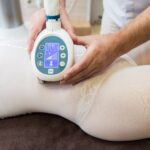Body Detoxification Treatment

Body Detoxification Treatment at Maira Wellness
Feeling constantly tired, bloated, or sluggish? It might be your body telling you it’s time for a full detox! At Maira Wellness, we offer a natural and holistic Body Detoxification Treatment designed to eliminate toxins, improve digestion, boost metabolism, and recharge your energy levels, all in just a few relaxing sessions.
What is Body Detoxification?
Body Detoxification is a therapeutic process that helps flush out harmful toxins and waste buildup from your body through a combination of detox therapies, herbal treatments, dietary guidance, and lymphatic drainage techniques. It supports your liver, kidneys, and digestive system for optimal health.
Benefits of Body Detoxification
- Boosts immunity and natural healing
- Improves digestion and gut health
- Increases energy levels and mental clarity
- Reduces bloating, water retention, and fatigue
- Promotes glowing skin and hormonal balance
- Relieves stress and enhances overall wellness
Why Choose Maira Wellness?
At Maira Wellness, we combine modern detox techniques with ancient natural therapies for a safe and effective cleansing experience. Every treatment is customized based on your body type, lifestyle, and health goals — so you get real, long-lasting results.
Who Needs a Detox?
You should consider detox treatment if you experience:
Constant fatigue or low energy
Digestive issues like constipation or bloating
Skin breakouts or dull complexion
Irregular sleep patterns or mood swings
Poor diet or regular exposure to junk food, pollution, or stress

Maira Wellness
Your go to wellness centre
Have Any Question?
- (+91) 9620762625
- support@mairawellness.com
Book An Appointment
Duration & Sessions
Our expert therapists will guide you through personalized sessions that typically range from 60 to 90 minutes, depending on the plan selected. A full detox program may involve multiple sessions over a few weeks for deeper internal cleansing.
Book Your Detox Journey Today
Ready to feel lighter, energized, and completely refreshed?
Book your Body Detoxification Treatment at Maira Wellness now!
Call us or walk in today – your cleaner, healthier body is just a session away.








